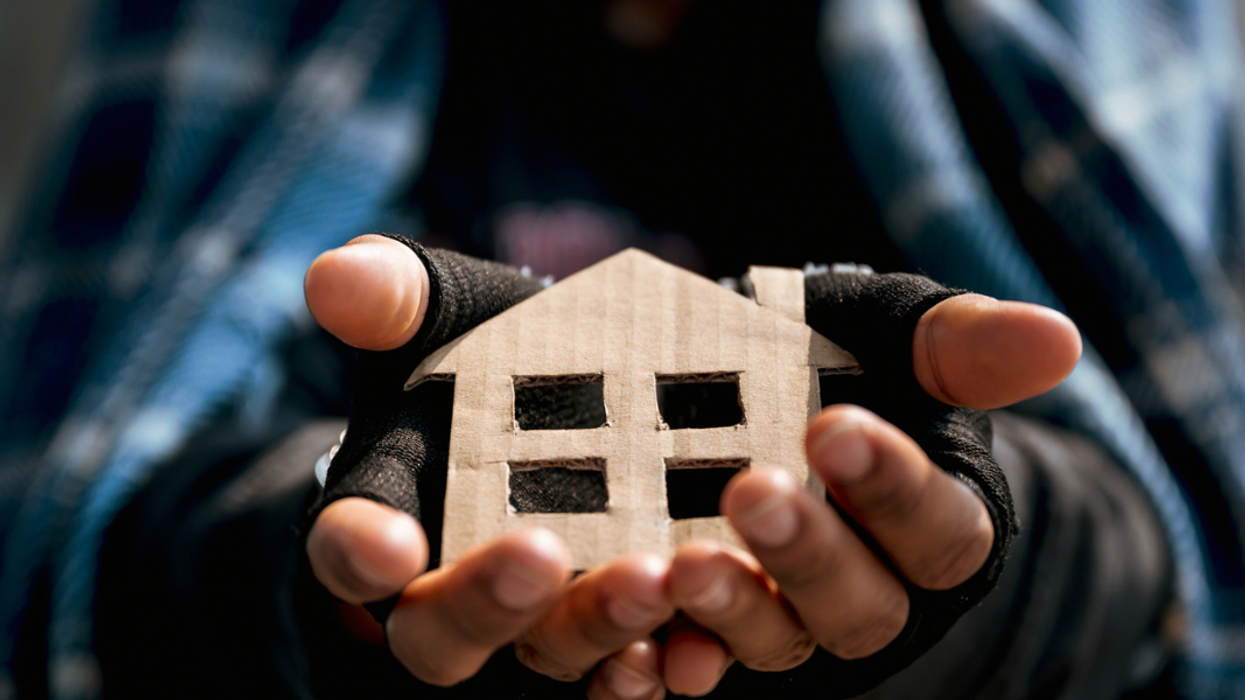Los Angeles officials say homelessness is declining, but Skid Row tells a different story. In an interview with Alex Segura, Mahdi Manji of Inner City Law Center explains why official numbers don’t match the reality and what solutions are still missing.
Mahdi Manji: “Los Angeles Needs More Affordable Housing and Better Coordination”
Official counts indicate a 22% drop in unsheltered homelessness in Skid Row over two years. However, a more detailed neighborhood study reveals that homelessness in that neighborhood actually rose by 9%. We spoke with Mahdi Manji, Policy Director at Inner City Law Center, to understand why reality on the street feels very different.
Let’s start from the beginning. What exactly is the Inner City Law Center?
It is a nonprofit that offers legal services to people who are unhoused or at risk of losing their housing across Los Angeles County. We help veterans obtain federal benefits, people with disabilities secure SSI (Supplemental Security Income), a cash benefit for those with very low income who have a disability, blindness, or are over 65, and people living on the street resolve legal issues, often to recover an ID. We also defend families in eviction cases and negotiate with landlords to keep them housed.
And what is your role within the organization?
I am the Policy Director. My work is to advocate with city, county, and state officials to push for policies that address homelessness. We do not work at the federal level, but we do across the local and state scope.
What are the main lines of this policy advocacy?
Promoting the construction of housing, especially affordable housing, investing more in prevention, and avoiding the criminalization of people experiencing homelessness. Unfortunately, we still see police issuing tickets or fines for the mere fact of living on the street, which delays people’s exit from homelessness.
We are in the heart of Los Angeles, near Skid Row. The official figures say street homelessness here has fallen by 22 percent. Do you share that perception?
If we look at the city, the county, and even California as a whole, historically, it has been very difficult to build housing. Since the 1970s, there has not been enough built to keep up with population growth. This has driven prices up and increased homelessness. Government has made significant efforts. Financial aid. Identifying people at risk. Purchasing hotels to convert into permanent housing. Investing in affordable housing. Partially funding legal services like ours. All of this has contributed to a moderate decrease in homelessness countywide.
But not everywhere?
Exactly. The impact is not uniform. In neighborhoods like Venice or Hollywood, with hotel acquisitions, the decline is more notable. In Skid Row, where poverty is deeply entrenched, there are projects underway, but change is smaller. This shows we need more investment here. Affordable housing with support. Rental subsidies. Prevention services.
In Skid Row, not everyone is unhoused?
Correct. There are also residents in affordable housing, supportive housing, and shelters. Many are at risk of losing it. Supporting them is essential, as is helping directly those who are still living on the street.
Let’s talk about the legal services you provide. What is the most common issue you see?
Eviction. A recent study of ours shows that 30 percent of people enter homelessness directly due to an eviction, and another 20 percent indirectly. We defend tenants in civil court, and in more than half the cases, we succeed in keeping them in their homes.
And when that is not possible?
In 45 percent of cases, we secure financial settlements of $15,000 or $20,000 to help them find a new place to live.
What do you do for people already living on the street?
We help them recover lost documents like driver’s licenses or birth certificates, often destroyed in police sweeps. We also resolve records tied to minor poverty-related offenses through expungement processes that make it easier to access housing.
If we look at the past decade, what has been the biggest failure in public policy?
Not building enough housing to meet population growth. This has forced people to live far away or directly on the street. There is also a lack of coordination among the 88 cities of Los Angeles County.
Is there any initiative to improve that coordination?
Yes. We pushed for the Los Angeles County Affordable Housing Solutions Agency to coordinate efforts and build more affordable housing. The new county homelessness department is also an opportunity.
If you were Los Angeles Mayor Karen Bass and could change one budget item, what would you do?
I would invest more in affordable housing and remove administrative barriers that make construction slower and more expensive. I would also put more money into prevention services. It is much cheaper to help someone before they lose their home than to assist them once they are already on the street.
Across the country, which cities do you think are managing homelessness better and could serve as a model for Los Angeles?
Houston has one of the lowest homelessness rates in the country. It combines coordinated effort between city and county to house people with robust housing production that keeps prices affordable. This allows smaller public subsidies to reach many more households.
With the current Trump administration, have there been changes in federal housing and homelessness policies? What impact are they having locally?
Many of these changes are still evolving and not yet in effect. We are particularly concerned about the proposal to reduce funding for supportive housing for people with disabilities, and the rising costs of construction due to tariffs and labor shortages driven by increased deportations.
In California, many housing projects face neighborhood opposition, the well-known NIMBYism. How does that affect Los Angeles?
There is always a minority opposed to any public good. The problem is when that minority has power to stop housing projects. A RAND Corporation study found that the cost of building affordable housing is 2.8 times higher in California than in Texas, partly because of policies that allow small groups to block projects.
Do you think homelessness is becoming more politicized? Does this help or hinder solutions?
In Los Angeles, residents have been willing to tax themselves to fund homelessness prevention and affordable housing construction. Last year, the county approved a half-cent sales tax for these programs, and at the state level, affordable housing bonds have been repeatedly approved. The issue is increasingly part of public debate, and I think it is a priority for residents, regardless of political orientation.
Many unhoused people struggle with mental health or addiction issues. What role should the health system play?
At Inner City Law Center, we support the Housing First model, which prioritizes housing first and then offers mental health and addiction treatment to help people keep it. California has launched programs like CalAIM, which covers rent for unhoused people or those at risk, and IHSS, which offers in-home support for people with disabilities. Both are funded by Medi-Cal, and federal cooperation is essential to maintain and expand them.
There is no evidence that police action reduces encampments. Studies show nearly all return days after a sweep, and these operations often lead to fines, arrests, and loss of belongings, which can extend homelessness for up to two more years. The alternative is to build more affordable housing, supportive housing, and shelters, because right now there simply is not enough capacity to meet the existing need in Los Angeles.
Fulcrum Plus: Mahdi Manji, Inner City Law Center
- YouTube youtu.be
Alex Segura is a bilingual, multiple-platform journalist based in Southern California.

































